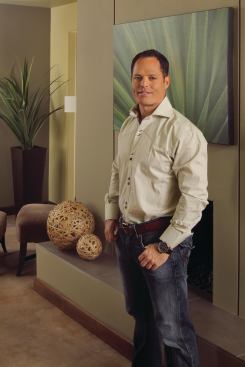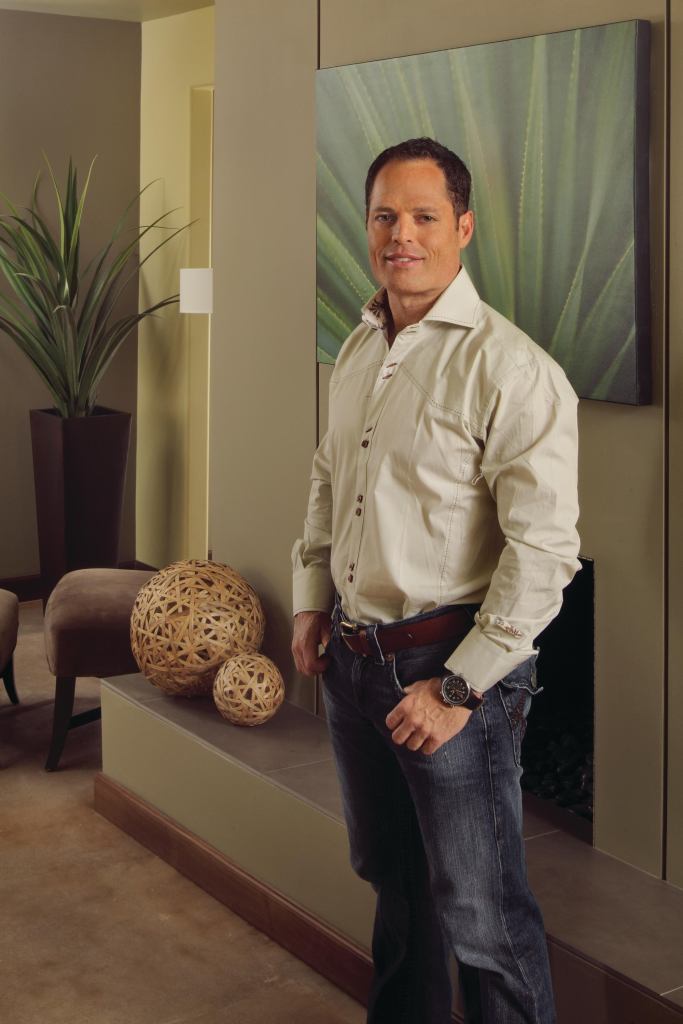In addition, the new windows from Jeld-Wen meet historic preservation requirements while achieving a U-factor of 0.32, also a marked improvement from the original home’s cracked and broken windows.
To shield the home from the desert sun, landscape architect Michele Shelor specified six fast-growing mesquite trees around the perimeter. In all, energy usage was reduced 70% compared to the pre-remodeled house and the HERS rating went from 208 to 65, which was key to achieving Emerald certification, says Dalrymple.
“A certified remodel is about how much you improve the home over what you started with,” he says, a different standard than for certification of a new house.
Most of the remodel’s 58% water savings was achieved by replacing the lawn with desert-adapted landscaping. To keep watering to a minimum, a Hunter drip irrigation system with a solar sensor gathers on-site temperature data used in the calculation of evapotranspiration (ET) to determine daily watering needs. The unit also measures the sun’s rays for optimal watering in every season.

Michael Baxter/Baxter Imaging
Philip BeereFounder, Green Street
With budgetary considerations never far from his mind, Beere made money-saving choices such as keeping the existing laminate floors in the main house’s bedrooms and specing ceramic tile kitchen countertops instead of his preference, a more modern-looking and costly concrete. He left out some high-performance products, such as a tankless water heater, which would have required increasing the size of the electrical service and an expensive and time-consuming overhaul of the electrical system. In all, Beere estimates that $35,000 of the total $80,000 renovation went to high-performance upgrades.
Nevertheless, Beere makes sure that each Green Street project sports at least a few consumer-friendly signs of its sustainable nature. “People often walk into a house and say ‘OK, point out the things that are green here,’” he says. “But most of our sustainable features aren’t necessarily visible, so we like to make sure we have a few products chosen for their ‘cool factor,’ such as LED lights, recycled concrete pavers, or dual-flush toilets.”
PROFILE: Philip Beere FOUNDER, GREEN STREET
Philip Beere founded Green Street in 2006 with the goal of
sustainably renovating smaller homes in Phoenix’s close-in
neighborhoods. But after completing his first green project in the
Biltmore Park neighborhood, certified LEED-Gold in February 2008,
Beere’s commitment to this goal was tested. The lending market crashed
just weeks later, and potential buyers evaporated. The house never sold. “It was very much a learning experience for me," says Beere, who now
uses the house as an office and training center.
Undaunted, Beere was energized by the opportunities he saw in the
downturn. In addition to flipping foreclosed homes into sustainable
showpieces, he became a LEED-AP and an educator for the USGBC, AIA, and
ASID, and produced a green remodeling DVD.
Since the Elm Street project, he has certified four other homes to
the National Green Building Standard, and 10 other green remodels are in
the works.
Sticking with his original plan even during tough times was a “leap
of faith," but Beere says it was the right decision. He has found that
high-performance, energy-saving homes are more in demand now than before
the market downturn, especially in close-in neighborhoods.
“All of our Realtors are telling us that the response to green
houses is great; some here are selling in less than three days," says
Beere, who was named Green Advocate of the Year at the NAHB’s recent
National Green Building Conference.
After a 90-day renovation, the house—purchased at a public auction for $90,000—quickly sold for $240,000, $2,000 under its appraised value, helping to prove Beere’s theory that revitalization of Phoenix’s foreclosed houses can be sustainable, affordable, and profitable.
Green Street’s commitment to high-performance renovation also has paid off in professional accolades: The Elm Street house was named the NAHB Green Remodel of the Year at the 2010 National Green Building Conference in May, bringing recognition not only to Beere but to his hometown.
“It brings attention to the city of Phoenix, often labeled as not being as environmentally progressive compared to cities like Portland or Denver,” he says. “The fact is, Phoenix has many individuals and professionals who are passionate about making it a sustainable city.”
Learn more about Beere’s strategies for profiting from green remodeling in the video below.
Jennifer Goodman is Senior Editor Online for EcoHome.
